
By Kathy Torres
If you have a pool, or a home on Lake Murray, or you just want to feel like you’re on vacation, it’s easy to bring the feel of the tropics home with a variety of plant selections. Fortunately, our climate typically supports growing and maintaining tropical banana plants as perennials. These exotic beauties thrive on sun and humidity, so our summers are perfect! We don’t have a long enough growing season to produce fruit on banana plants, however, these tall, tree-like plants with delicate, elongated leaves can be enjoyed throughout the warm weather year after year, with a cut-back and mulch when frost arrives. Elephant Ear plants, sometimes considered annuals in our area, can be used as a focal point in the landscape, a stand-alone plant, or a “thriller” in a container garden plant grouping. Many colors are available, accented with beautiful veining, offering a dramatic effect. If you take the container garden route, it’s possible to overwinter by bringing it inside to provide protection from the cold temperatures.
There are a variety of species and cultivars of banana plants, and most that we have access to belong to the genus Musa. Banana plants originated in Southeast Asia near present-day Malaysia and Indonesia. Travelers introduced the plant to Africa sometime in prehistoric times and brought it to South America during the mid-1000s. While we often hear banana plants referred to as trees, they’re actually large, herbaceous plants. Banana leaves emerge from a corm, which is a swollen, underground stem in a tightly-rolled form. The leaves lead to what looks like a trunk, but the structure is actually a pseudostem and if it were to produce actual bananas, the stem would then be cut away. Each pseudostem that develops will only produce one time. It’s not really an issue in this area of the country where fruiting is not likely to occur, but it’s interesting to note and supports the cutting back of the stem(s) in winter. It’s normal procedure for the plant. Some locals have been known to dig up the banana tree each Fall, cut the leaves off, lay the trunk and roots down, “bury” trunk and roots under heavy mulch in a protected area (crawl space of the house works well), and replant it each Spring. This technique keeps the trunk from freezing and creates the potential for fruit development over time.
Banana plants are very fast-growing and are not particularly vulnerable to pests. Mature size varies anywhere from 2 ft. (dwarf varieties) to 15 ft. They like heavy feeding with a high Nitrogen fertilizer and like to stay moist, but not completely saturated with water.
Elephant ears, also native to Asia, provide dramatic foliage with their enormous, heart-shaped leaves, ranging from 2-6 ft. long on top of 3-7 ft. stems. Species Alocasia and Colocasia do well in the Midlands with many varieties and colors available. These tuberous plants can be grown as summer annuals however, Colocasia varieties are often perennial in our agricultural zone. In general, morning sun and afternoon shade are preferred, but if the leaves point up full sun can be tolerated. Elephant ears prefer fertile, loamy soil that is slightly acidic and they don’t like to dry out. Keep them wet. If you’re looking for something to plant around the edge of a pond or in a rain garden, Elephant Ears are perfect for the job. You may need to dig up the tuber and replant in the spring (after danger of frost) if it is not a type that can hold its own in cold weather. Bring vulnerable Elephant Ear plants in container gardens into the garage or greenhouse in the winter. Fertilize regularly with a high Nitrogen fertilizer during the growing season. If you see aphids, whiteflies, or spider mites, spray an all-purpose plant insecticide to eliminate the little buggers. See info at the end of the blog for pest control options. Interesting Fact… Elephant ear is grown as a food crop in much of the tropical world and the traditional Polynesian dish, poi, is made from the tubers. It is, of course, cooked. Note… The calcium oxalate crystals in the leaves are toxic and very irritating to the mouth (if uncooked), so be sure to keep pets and small children away from Elephant Ears in the garden.
The following (*) Banana and Elephant Ear plants are available right now at my favorite Midlands Garden Center – Wingard’s Market. Others listed will likely be available later in the season, so check back as the inventory increases.
BANANA
*Cavendish, Musa acuminata ‘Dwarf Cavendish’

Mature size 3’ H x 3’ W, will stay smaller in a container, leaves develop maroon/purple coloration that fades.
*Red Abyssinian, Ensete ventricosum

Mature size 8-10’ H x 6-8’ W, red coloring on the leaves, cold hardy to 25 degrees, not a true banana plant.
Hardy Fiber, Musa basjoo

Mature size 6-15’ H x 6-15’ W, leaf size up to 6’ long x 2’ wide, cold hardy to -10 degrees.
Zebrina Rojo, Musa acuminata zebrina ‘Rojo’

Mature size 5-6’ H x 5-6’ W, large green leaves splashed with burgundy-red coloring, reddish stem.
Little Prince, Musa hybrid ‘Little Prince’

Mature size 2’ H x 2’ W, Compact with green leaves, great in a container garden.
ELEPHANT EAR
*Colocasia Esculenta, AKA Taro

Mature size 3-6’ H x 3-6’ W, green leaves, conspicuously-veined.
*Colocasia Esculenta ‘Black Magic’

Mature size 3-6’ H x 3-6’ W, smoky purple leaves about 2’ long.
*Colocasia Esculenta ‘Waikiki

Mature size 3’ H x 3’ W, glossy green and white with vivid pink veins on dark stems.
*Alocasia Calidora

Mature size 5-9’ H x 3-5’ W, grows in a vase shape with green, arrow-shaped, ribbed leaves 6’ long x 3’ wide, upward facing leaves indicates sun tolerance.
*Alocasia Odora AKA Night-Scented Lily

Mature size 4-8’ H x 2-3’ W, brilliant green leaves grow to 2’ long, fragrant at night, sun tolerant
*Alocasia Portora

Mature size 6-8’ H x 4-6’ W, dramatic green, ribbed leaves, sun tolerant.
When you can’t get to a tropical paradise, just create one in your own back yard. Bring drama and interest into your landscape or combine smaller versions in containers with summer annuals. Pay attention to cold weather characteristics of the different varieties you come across and take the necessary action to overwinter them successfully, or simply plant as annuals. There are SO many tropical plants in addition to these favorites, so come on out to Wingard’s and check them out. After you’ve planted your tropical accents, relax and play a little Jimmy Buffett music. Imagine you’re sitting on a beach somewhere on an island in the Carribean and head on over to Margaritaville.
There’s Always Something Blooming at Wingard’s!
Here’s the scoop on fighting aphids, whiteflies and spider mites:
- As a preventive measure, use Fertilome Tree & Shrub Drench in the spring. This is a systemic product that is absorbed through the roots and works its way into the plant foliage. Pests are eliminated as they feed on the leaves.
- A contact pesticide is best if you actually see these insects on the plant. We recommend Bayer 3 N 1, which also contains a fungicide and mitecide. It’s a good product to have on hand for many plant pest problems. It is not oil based, so it is safe to use when temperatures are hot in the summer.
- Fertilome Spinosad or Spinosad Soap are our organic products. The “Soap” version also contains Potassium Salts of Fatty Acids (soap), sort of a one-two punch. Spinosad kills in one way, soap kills in another.
- For a REALLY natural solution, we will have live lady bugs all summer. They love aphids, but will also eat other insects…. according to https://savvygardening.com/5-surprising-facts-garden-friendly-bugs/ they eat aphids, scale, mites, mealybugs, small caterpillars, insect eggs and pupae, whiteflies, mites, and psyllids. WARNING: DO NOT USE LADY BUGS TOGETHER WITH INSECTICIDE, AS IT WILL KILL THE LADYBUGS.






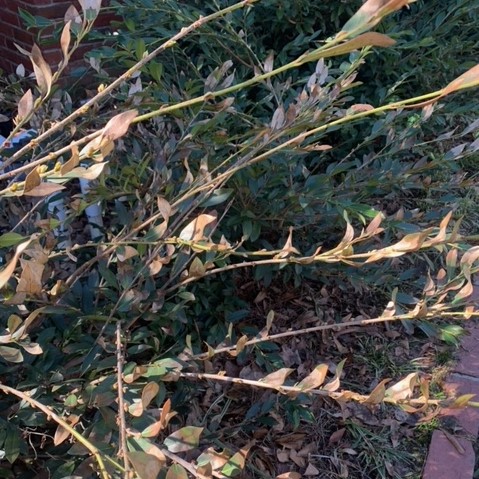
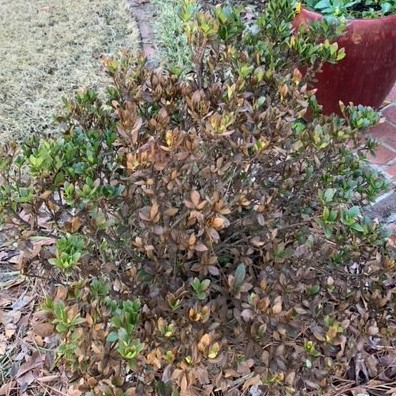











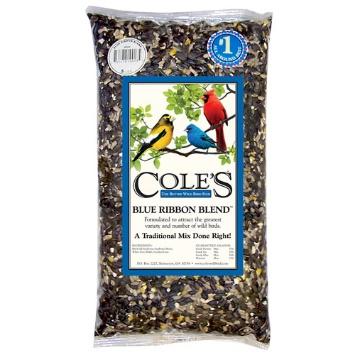
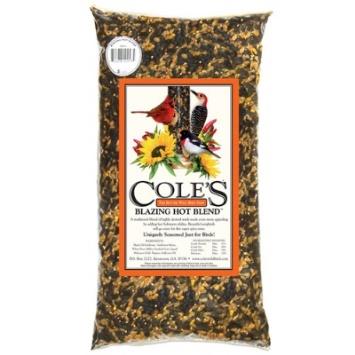
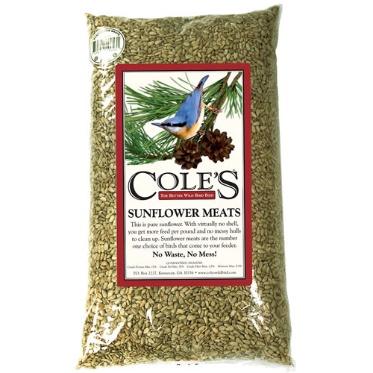
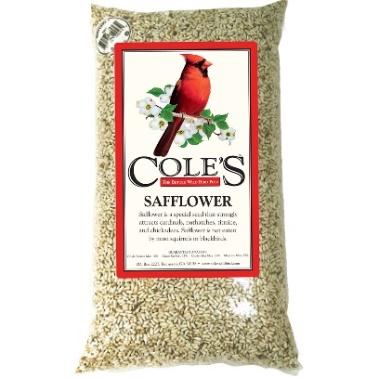
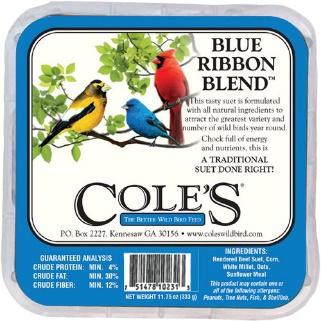





 Chances are you have probably received a Christmas card illustrating a snowy white landscape as the backdrop for a barren tree or fence post holding a bright red cardinal. The Northern Cardinal, AKA Red Bird, is common throughout the eastern United States from Maine to Florida, continuing north into Canada, and west to southern Minnesota, Nebraska, Texas, and the eastern half of Mexico. It’s hard to take your eyes off the male Northern Cardinal, with its brilliant red feathers, black mask, and orange/red beak. The female is a buff golden-tan with a red tinge to the wings and tail, with a smaller, less distinct mask. Both genders have a prominent head crest that can be raised and lowered to indicate the bird’s mood.
Chances are you have probably received a Christmas card illustrating a snowy white landscape as the backdrop for a barren tree or fence post holding a bright red cardinal. The Northern Cardinal, AKA Red Bird, is common throughout the eastern United States from Maine to Florida, continuing north into Canada, and west to southern Minnesota, Nebraska, Texas, and the eastern half of Mexico. It’s hard to take your eyes off the male Northern Cardinal, with its brilliant red feathers, black mask, and orange/red beak. The female is a buff golden-tan with a red tinge to the wings and tail, with a smaller, less distinct mask. Both genders have a prominent head crest that can be raised and lowered to indicate the bird’s mood.  It’s a common question we get this time of year! In fact, a customer sent us this picture.
It’s a common question we get this time of year! In fact, a customer sent us this picture.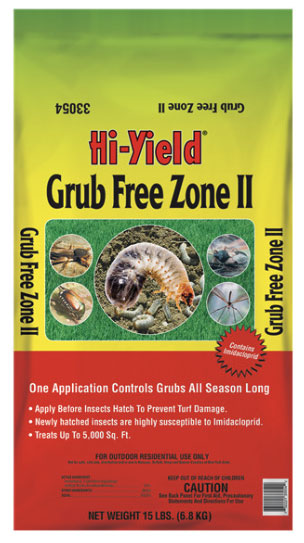
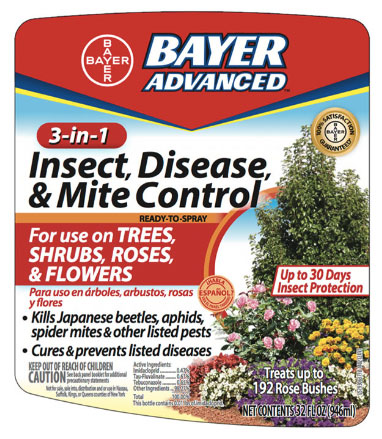 You may have seen some beetles munching on your roses or crape myrtles or a variety of other flowering plants. These are Japanese Beetles, and they arrived a little late this year, since we had such a cool Spring. Japanese beetles feed mainly on flower buds or open blossoms, but can feed on leaves. Since many beetles feed mainly at night, the gardener rarely sees them, only the damage that they cause.
You may have seen some beetles munching on your roses or crape myrtles or a variety of other flowering plants. These are Japanese Beetles, and they arrived a little late this year, since we had such a cool Spring. Japanese beetles feed mainly on flower buds or open blossoms, but can feed on leaves. Since many beetles feed mainly at night, the gardener rarely sees them, only the damage that they cause.
 Spring bulbs faithfully reappear at the most advantageous time – after a long, cold winter, just when we’re longing for bright colors to relieve the monotony of winter snow and ice. Most spring bulbs are perennial and multiply in number every year, bringing more beauty to the flowerbeds each spring, but some problems can destroy a carefully planted bulb bed. Seemingly carefree, bulbs do require a bit of nurturing to ensure they perform their very best for years to come.
Spring bulbs faithfully reappear at the most advantageous time – after a long, cold winter, just when we’re longing for bright colors to relieve the monotony of winter snow and ice. Most spring bulbs are perennial and multiply in number every year, bringing more beauty to the flowerbeds each spring, but some problems can destroy a carefully planted bulb bed. Seemingly carefree, bulbs do require a bit of nurturing to ensure they perform their very best for years to come.
 Although many gardeners plant trees and shrubs in the spring, knowledgeable gardeners plant in the fall to take advantage of all this fabulous season has to offer. But why is fall planting better than spring planting?
Although many gardeners plant trees and shrubs in the spring, knowledgeable gardeners plant in the fall to take advantage of all this fabulous season has to offer. But why is fall planting better than spring planting?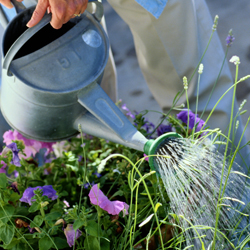
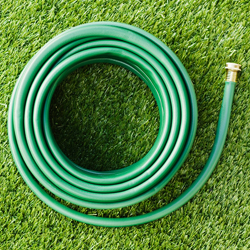
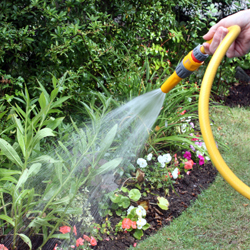 Water is critical for a healthy garden and landscape, but how much water is too much, how much isn’t enough and how much is just right? Unfortunately, there isn’t a specific answer that suits every gardener’s needs. All plants have different water requirements, which change depending on the type of soil, amount of sun, temperature, humidity, season, maturity of the plant and overall growing environment.
Water is critical for a healthy garden and landscape, but how much water is too much, how much isn’t enough and how much is just right? Unfortunately, there isn’t a specific answer that suits every gardener’s needs. All plants have different water requirements, which change depending on the type of soil, amount of sun, temperature, humidity, season, maturity of the plant and overall growing environment.